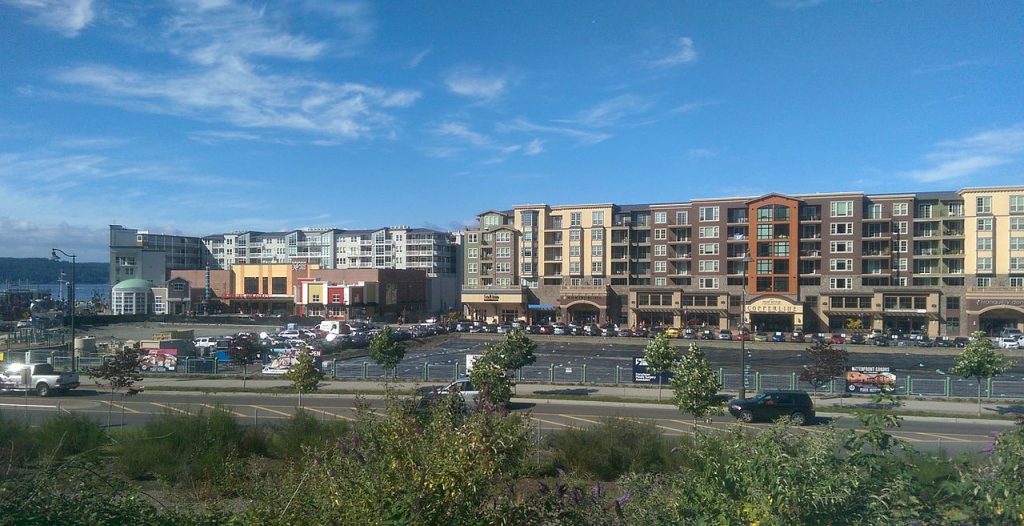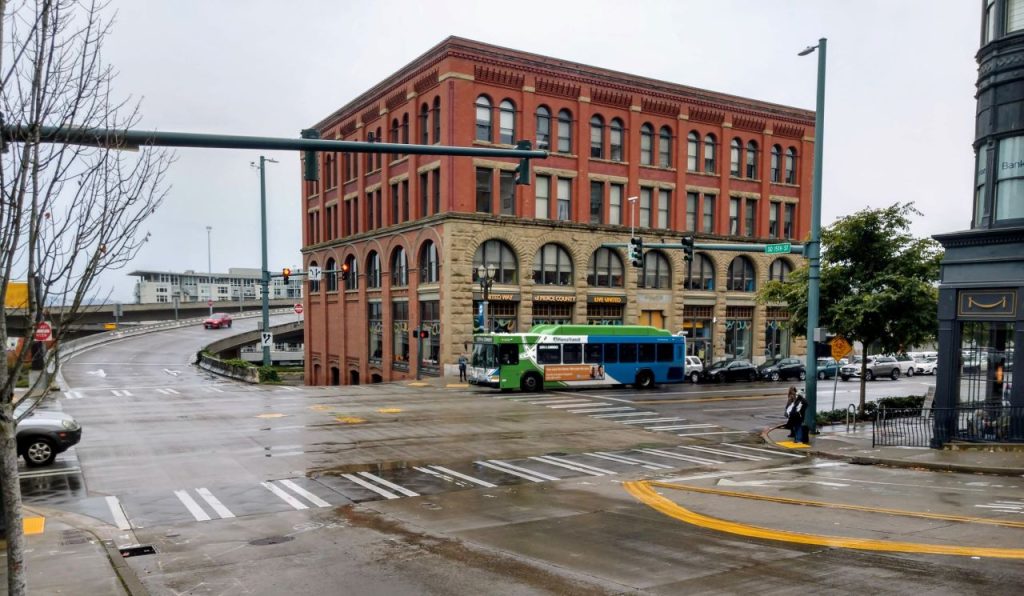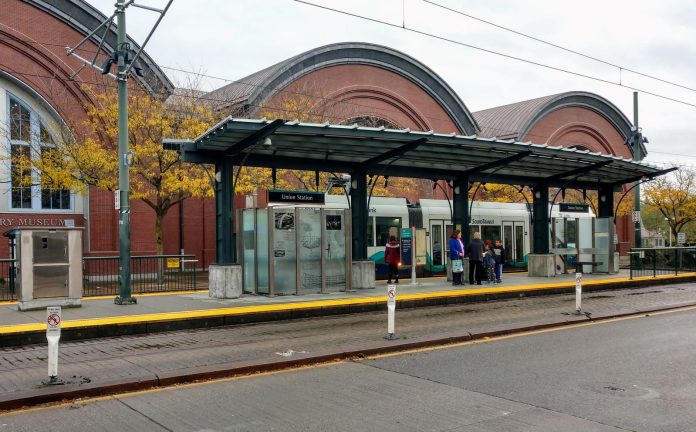Recently, I was asked for my definition of an urbanist. In reaching for a definition, I realized that I actually don’t have one–certainly not one that captures the contradictions and nuances that most interest me most about urban life and experiences.
A Google search revealed to me that a settled-upon definition doesn’t actually exist, even though many people are asking.

Many of us may be assuming that who or what we think of when we say or hear “urbanist” is what others think of–that we all share in the same stock images. It’s worth marking what those shared stock images are, and why the identity seems to coalesce around a particular set of behaviors and attitudes regarding the city.
As I started putting together my own sense of who can be called an urbanist and what an urbanist does, I started to wonder whether or not I was an urbanist. It’s an odd question at first: I write for The Urbanist, teach courses about cities and public life at an urban-serving university, and conduct research that centers urban life and issues. More than that, I lend my personal time and energy to supporting groups and organizations whose missions are city-centric. If these things don’t describe an urbanist, then what does?
My unease with applying the term to myself stems from how I came to the work the I do. Beyond that, it has to do with the intended ends of the work I do. In between how I came to this work and what I hope this work accomplishes is someone who can definitely be described as an urbanist, especially if we apply much of what Scott Bonjukian astutely lays out in “Why I Call Myself an Urbanist,” published in this magazine in 2016. But I also think that the work of an urbanist starts before and exceeds those attitudes and behaviors we’ve come to associate with an urbanist identity, and therefore my unease is also rooted in all that we miss when we so narrowly ascribe this identification to those who can make demands of their civic leader and fellow citizens.
Bonjukian’s discussion of urbanism takes much from what former Seattle Mayor Michael McGinn wrote in Crosscut some days before he published his piece. McGinn’s idea of urbanists settles on what urbanists want: more people living in cities; greater access to and within the city; a prioritization of public space; a preference for bottom-up approaches to dealing with the complexities of living among others rather than top-down processes which tend to privilege external interests rather than local needs. If this is what an urbanist is, then I side with Bonjukian in calling myself an urbanist.

The thing is, I don’t think these preferences are unique to the small subset of city dwellers who claim the identification or are publicly recognized as urbanists. My sense is that there are many people who, given the option, would very much prefer to live within walking distance of their job, the grocery store, the park, the clinic, school. That given the option, would prefer to get their goods and services from their neighbors rather than from a chain or a big conglomerate. That if they could get to shopping and work and school without first having to take out a multi-thousand dollar loan just to be able to participate in the economy because there was quality transit available that they might choose the latter.
Many or most people living in cities don’t have the ability, for one reason or another, to advocate for their preferences as we know urbanists to do, though. I am thinking here of the woman I often see on walks in my neighborhood pushing a stroller along the shoulder of Waller Road in Southeast Tacoma, a busy four-lane road with no sidewalk. Is this woman a nanny who’s taking her charge out for a stroll on a sunny day? Or is she a mother walking back from the market carrying groceries in the stroller? I’m thinking of the couple who I run into on walks in my neighborhood, where the husband steadies himself with a cane and sometimes by holding onto his spouse on the parts of the road where the uneven grade on the shoulder makes even me lose my balance. I’m thinking of the man in his mid-40s who struggles to get his bike up a hill on 72nd near Canyon Road, a main thoroughfare in South Tacoma that is served by one bus line once an hour, between the hours of 9am and 6pm.
I’m sure that each one of these persons would say yes to slower streets, to sidewalks, to bike lanes, and to quality transit. But these are people who, despite their preferences, can’t easily engage in the types of advocacy and work we tend to associate with urbanists. These are people who work two or more jobs atop of other responsibilities; who may live in households of mixed legal status; people who’ve, in one way or another, been disinvited from public conversations about their city.
Even before I knew how to talk about and advocate for more equitable and accessible cities, I knew that most areas of most cities aren’t designed or built with people like me in mind. Growing the child of immigrants, raised by a single parent who doesn’t drive but who had to work in order to keep us fed and clothed, gave me an early education in all the ways a city could be made more equitable and accessible for people like me, even if the city I lived in wasn’t either of these. In time, I would also learn that calls to make a city more equitable and accessible don’t necessarily apply to cities in their totality, but rather to those parts where people who can advocate for themselves, do.

I’ve written about walkability, transit, and density in this publication before, but it would be a mistake to think that these aspects of city life are merely preferences of mine; rather, these are aspects of city life that I think about and advocate for because they relate to my direct experience of the inaccessible city from childhood to now.
I know about the value of density and how valuable accessory dwelling units (ADUs) are because I lived in a lightly converted garage with my mother and four of my siblings between the ages of five and 15; at 15, my mom had saved up enough money to build an ADU in my sister’s backyard, where I lived until I left for grad school out of state. In the summer before I started junior high school, the city announced that it would no longer provide bus service for students beyond 6th grade; because my mom didn’t drive, I walked home from school on multiple occasions. The distance between school and home was about three miles. When my mom could spare the bus fare, I would take transit–two buses–to school.
To be sure, there’s a lot to gain from the advocacy work being done by urbanists. I wouldn’t engage in this work if I didn’t think it did. At the same time, the advocacy work that I and others do under the auspices of “urbanism” seems to me to exclude the important and valuable changes that come to cities through the presence and invisible work done by people who everyday get up and walk the distances even when there’s no sidewalks; who take transit even when service is irregular and gets them close enough; who practice density (sometimes illegally) because it’s the only way to afford a place near work or school. We may not call their presence and their daily actions “urbanism,” and they may not call themselves urbanists, but it’s worth recognizing that over decades and across generations, it’s the people who have made a life in cities despite how these have been allowed to develop unevenly who deserve the most credit.
Before asking the question, What is an urbanist? or Am I an urbanist?, there’s a more pressing question: Who’s job is it to address and solve the issues facing cities? Before the rise of the various professions now tasked with the design and planning of cities, this question was answered by recognizing that everyday people living in towns and cities took up that responsibility. My sense is that that’s still the case, even though the discourse of “making cities more livable” tends to be assigned to those who identify or are identified as urbanists.
In his 2018 book, The Help-yourself City, Gordon Douglas examines many examples of everyday people taking urban planning into their own hands and for their own reasons. The argument Douglas presents reminds us that the project of making a life together known as a city–a rather complex project–has always been an imperfect, not very precise, and spontaneous process borne out of particular necessity.
Douglas’ examples support a thesis suggesting that there’s a distinction to be made between the rise of the professional planner that arose in the 17th and 18th centuries as cities became more chaotic, a rise that fully reached its apex in the 20th century as these professions gained the sanctity that is conferred upon them institutionally, as academic disciplines and actual professions. It’s not a coincidence that this institutionalization and professionalization was/is more readily seen in North America.
The distinction Douglas makes is useful up to a point; many people who claim an urbanist identification or who have this identity assigned to them don’t have urban planning or design degrees but still manage to exert influence upon official city planning processes. As Douglas has recognized, the ability to take part in consequential conversations about what a city could and should be is not divorced from certain types of privilege.
This, I think, is a good place to spend more time thinking about the stock images we all seem to deal in when thinking about who is and isn’t an urbanist–how these generalized ideas intersect with different types of privilege and already-existing access. A city that works allows for many solutions to the many problems and issues cities face. The more these solutions can be sourced from more of the city’s residents, the more inclusive a city will become.
There’s been lots of renewed attention to the concept of the 15-minute city lately, and urbanists here and there are rallying around this cause. No doubt, those parts of the city that we manage to remake through these efforts will be able to boast greater walkability, quality transit, and better parks and public spaces. But until our notion of who is or can be an urbanist broadens to include the poor, the undocumented, the disabled, and the aging, we will continue to have various versions of the city all sharing a name. Until our idea of urbanism includes the presence and everyday activities of those we don’t tend to think of when we hear or say “urbanist,” the 15-minute city will also be the hour-long commute city, the pedestrian-death city, the exploitative city.
For now, I want to leave you, reader, with a question: if the idea and sense of an urbanist we all carry with us does indeed premise a person with the time, access, and privilege, how complete and inclusive can the outcomes of our efforts towards more accessible and equitable cities really be? What would an urbanism that recognizes and takes into account the many ways people who aren’t otherwise able to take part in consequential conversations as we are having them in forums like this one look like and be? To wit: what is an urbanist/who is an urbanist if our definition makes room for the urbanism of the poor?

Rubén Casas
Rubén joined The Urbanist's board in 2022. He is a scholar and teacher of rhetoric and writing at the University of Washington Tacoma. He is also the faculty lead of the Urban Environmental Justice Initiative at Urban@UW. In his work and advocacy, Rubén examines how cities and the institutions that comprise them imagine, plan, and build in ways that promote and/or discourage community and a sense of place.

